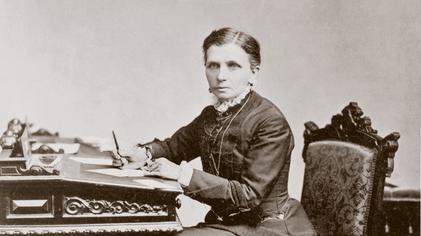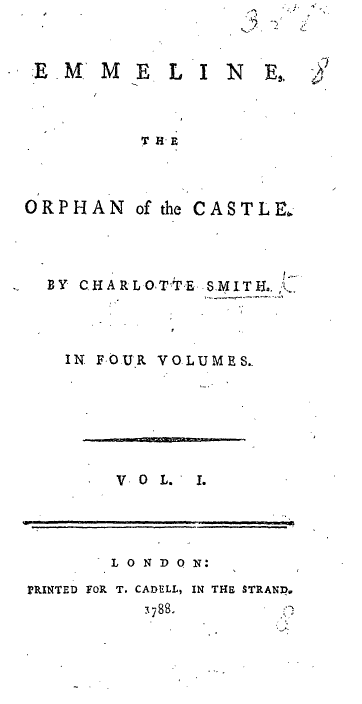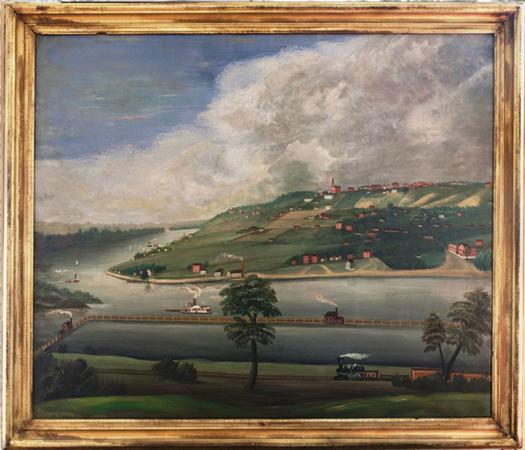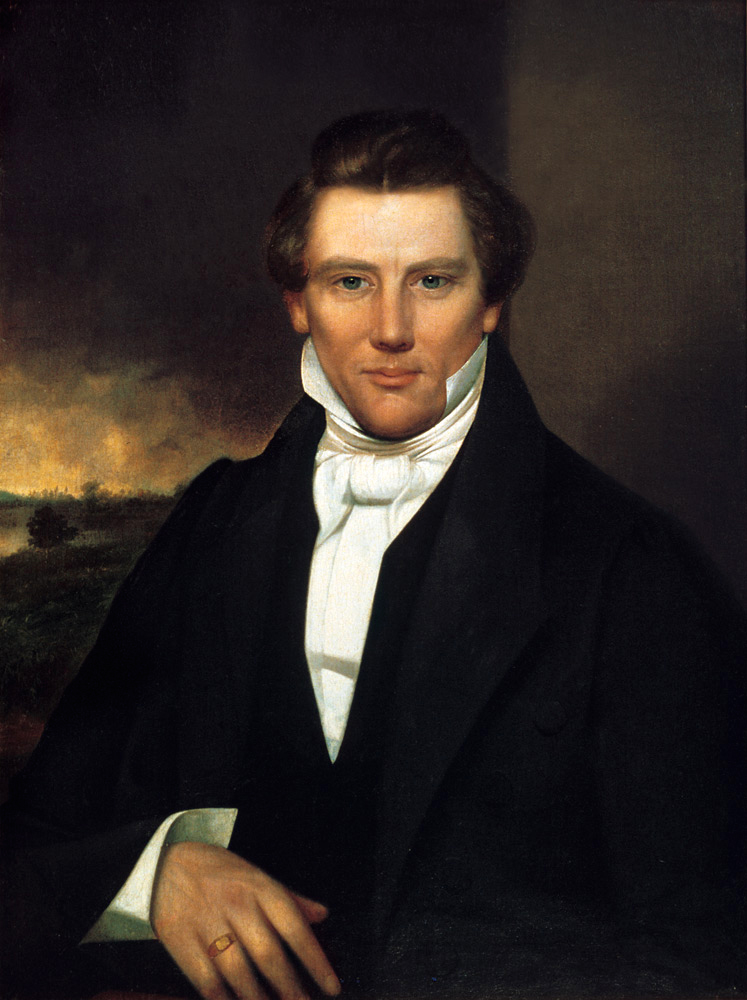|
Emmeline B. Wells
Emmeline Blanche Woodward Harris Whitney Wells (February 29, 1828 – April 25, 1921) was an American journalist, editor, poet, women's rights advocate, and diarist. She served as the fifth Relief Society General President of the Church of Jesus Christ of Latter-day Saints (LDS Church) from 1910 until her death. She represented the state of Utah at both the National and American Women's Suffrage conventions and was president of the Utah Woman's Suffrage Association. She was the editor of the ''Woman's Exponent'' for 37 years. She was a plural wife to Newel K. Whitney, then Daniel H. Wells. Biography Early life Emmeline Blanche Woodward was born on February 29, 1828, in Petersham, Massachusetts. She was the seventh child of David and Diadama Hare Woodward. Her father died when she was four years old. She would later claim that her widowed mother inspired her to be a women’s rights advocate. When her mother got remarried to Samuel Clark Jr., the Woodward family moved to Nort ... [...More Info...] [...Related Items...] OR: [Wikipedia] [Google] [Baidu] |
Petersham, Massachusetts
Petersham is a town in Worcester County, Massachusetts, United States. The population was 1,194 at the 2020 census. Petersham is home to a considerable amount of conservation land, including the Quabbin Reservation, Harvard Forest, the Swift River Reservation, and Federated Women's Club State Forest. History Petersham was first settled by Europeans in 1733 and was officially incorporated on April 20, 1754. On February 4, 1787, it was the site of the second battle of Shays' Rebellion. The town is noted for its common, part of the Petersham Common Historic District. About 45 buildings are listed on the National Register of Historic Places. The Country Store, an 1842 Greek Revival structure that has housed a general store on its main floor since its opening, sits just to the East of the common. The town's lands were expanded greatly by the building of the Quabbin Reservoir in 1938. When the towns of the Swift River Valley were disincorporated, Petersham and neighboring New Sale ... [...More Info...] [...Related Items...] OR: [Wikipedia] [Google] [Baidu] |
Woman's Exponent
The ''Woman's Exponent'' was a semi-official publication of the Church of Jesus Christ of Latter-day Saints that began in 1872. It published articles advocating for women's suffrage and plural marriage, in addition to poetry and other writings. Lula Greene Richards and Emmeline B. Wells were its editors until 1914, when the ''Exponent'' was dissolved. It was "the first long-lived feminist periodical in the western United States." While it had no direct successor, the Relief Society did launch its own magazine, the ''Relief Society Magazine'', in 1915. A new publication, independent of the church but partially inspired by the earlier magazine, was launched by a women's group in Massachusetts in 1974, entitled Exponent II, and continues to the present day, along with a program of annual retreats, and latterly a semi-autonomous blog site, ''The Exponent''. Goals and approach The ''Woman's Exponent'' (''A Utah Ladies' Journal'') was a periodical published from 1872 until 1914 in S ... [...More Info...] [...Related Items...] OR: [Wikipedia] [Google] [Baidu] |
Utah Territory
The Territory of Utah was an organized incorporated territory of the United States that existed from September 9, 1850, until January 4, 1896, when the final extent of the territory was admitted to the Union as the State of Utah, the 45th state. At its creation, the Territory of Utah included all of the present-day State of Utah, most of the present-day state of Nevada save for Southern Nevada (including Las Vegas), much of present-day western Colorado, and the extreme southwest corner of present-day Wyoming. History The territory was organized by an Organic Act of Congress in 1850, on the same day that the State of California was admitted to the Union and the New Mexico Territory was added for the southern portion of the former Mexican land. The creation of the territory was part of the Compromise of 1850 that sought to preserve the balance of power between slave and free states. With the exception of a small area around the headwaters of the Colorado River in pres ... [...More Info...] [...Related Items...] OR: [Wikipedia] [Google] [Baidu] |
Winter Quarters (North Omaha, Nebraska)
Winter Quarters was an encampment formed by approximately 2,500 members of the Church of Jesus Christ of Latter-day Saints as they waited during the winter of 1846–47 for better conditions for their trek westward. It followed a preliminary tent settlement some 3½ miles west at Cutler's Park.Gail Holmes, "Early Latter-day Saints - Settlement Cutler's Park" Early LDS, Sep 2006, accessed 2 Sep 2008 Members of the LDS faith built more than 800 cabins at the Winter Quarters settlement. Located in present-day overlooking the Missouri River, the settlement remained populated until 1848.1911 Encyclopædia Nebraska" [...More Info...] [...Related Items...] OR: [Wikipedia] [Google] [Baidu] |
Plural Marriage
Polygamy (called plural marriage by Latter-day Saints in the 19th century or the Principle by modern fundamentalist practitioners of polygamy) was practiced by leaders of the Church of Jesus Christ of Latter-day Saints (LDS Church) for more than half of the 19th century, and practiced publicly from 1852 to 1890 by between 20 and 30 percent of Latter-day Saint families. Today, various denominations of fundamentalist Mormonism continue to practice polygamy. The Latter-day Saints' practice of polygamy has been controversial, both within Western society and the LDS Church itself. The U.S. was both fascinated and horrified by the practice of polygamy, with the Republican platform at one time referencing "the twin relics of barbarism—polygamy and slavery." The private practice of polygamy was instituted in the 1830s by founder Joseph Smith. The public practice of plural marriage by the church was announced and defended in 1852 by a member of the Quorum of the Twelve Apostles, Or ... [...More Info...] [...Related Items...] OR: [Wikipedia] [Google] [Baidu] |
Emmeline B
''Emmeline, The Orphan of the Castle'' is the first novel written by English writer Charlotte Smith; it was published in 1788. A Cinderella story in which the heroine stands outside the traditional economic structures of English society and ends up wealthy and happy, the novel is a fantasy. At the same time, it criticises the traditional marriage arrangements of the 18th century, which allowed women little choice and prioritised the needs of the family. Smith's criticisms of marriage stemmed from her personal experience and several of the secondary characters are thinly veiled depictions of her family, a technique which both intrigued and repelled contemporary readers. ''Emmeline'' comments on the 18th-century novel tradition, presenting reinterpretations of scenes from famous earlier works, such as Samuel Richardson's '' Clarissa'' (1747–48). Moreover, the novel extends and develops the tradition of Gothic fiction. In combination with this, Smith's style marks her as a ... [...More Info...] [...Related Items...] OR: [Wikipedia] [Google] [Baidu] |
Indian Ocean
The Indian Ocean is the third-largest of the world's five oceanic divisions, covering or ~19.8% of the water on Earth's surface. It is bounded by Asia to the north, Africa to the west and Australia to the east. To the south it is bounded by the Southern Ocean or Antarctica, depending on the definition in use. Along its core, the Indian Ocean has some large marginal or regional seas such as the Arabian Sea, Laccadive Sea, Bay of Bengal, and Andaman Sea. Etymology The Indian Ocean has been known by its present name since at least 1515 when the Latin form ''Oceanus Orientalis Indicus'' ("Indian Eastern Ocean") is attested, named after India, which projects into it. It was earlier known as the ''Eastern Ocean'', a term that was still in use during the mid-18th century (see map), as opposed to the ''Western Ocean'' ( Atlantic) before the Pacific was surmised. Conversely, Chinese explorers in the Indian Ocean during the 15th century called it the Western Oceans. In Anci ... [...More Info...] [...Related Items...] OR: [Wikipedia] [Google] [Baidu] |
Nauvoo, Illinois
Nauvoo ( ; from the ) is a small city in Hancock County, Illinois, United States, on the Mississippi River near Fort Madison, Iowa. The population of Nauvoo was 950 at the 2020 census. Nauvoo attracts visitors for its historic importance and its religious significance to members of several groups: The Church of Jesus Christ of Latter-day Saints; the Community of Christ, formerly the Reorganized Church of Jesus Christ of Latter Day Saints (RLDS); other groups stemming from the Latter Day Saint movement; and the Icarians. The city and its immediate surrounding area are listed on the National Register of Historic Places as the Nauvoo Historic District. History The area of Nauvoo was first called Quashquema, named in honor of the Native American chief who headed a Sauk and Fox settlement numbering nearly 500 lodges. By 1827, white settlers had built cabins in the area. By 1829 this area of Hancock County had grown sufficiently so that a post office was needed and in 1832 the to ... [...More Info...] [...Related Items...] OR: [Wikipedia] [Google] [Baidu] |
The Church Of Jesus Christ Of Latter-day Saints
The Church of Jesus Christ of Latter-day Saints, informally known as the LDS Church or Mormon Church, is a nontrinitarian Christian church that considers itself to be the restoration of the original church founded by Jesus Christ. The church is headquartered in the United States in Salt Lake City, Utah, and has established congregations and built temples worldwide. According to the church, it has over 16.8 million members and 54,539 full-time volunteer missionaries. The church is the fourth-largest Christian denomination in the United States, with over 6.7 million US members . It is the largest denomination in the Latter Day Saint movement founded by Joseph Smith during the early 19th-century period of religious revival known as the Second Great Awakening. Church theology includes the Christian doctrine of salvation only through Jesus Christ,"For salvation cometh to none such except it be through repentance and faith on the Lord Jesus Christ." Book of ... [...More Info...] [...Related Items...] OR: [Wikipedia] [Google] [Baidu] |
Vernon, Vermont
Vernon is a town in Windham County, Vermont, in the United States. The population was 2,192 at the 2020 census. Vernon is the site of the now-defunct Vermont Yankee, the state of Vermont's only nuclear power plant, which closed in December 2014. History The town was chartered in 1672 as part of the Massachusetts Grant. In 1736 the area was granted by Massachusetts as part of Fall Town, and in 1753 the area was granted as Hinsdale. When the Connecticut River was established as a boundary, two separate towns were created: Hinsdale, New Hampshire and Hinsdale, Vermont. The people who lived in Hinsdale, Vermont wanted a separate name, and in 1802 the Vermont legislature changed the town's name to Vernon. The name is said to have been chosen after President George Washington's plantation home, Mount Vernon. Fort Bridgman, in Vernon, was burned in 1755, a casualty of the French and Indian War. Geography According to the United States Census Bureau, the town has a total area of 2 ... [...More Info...] [...Related Items...] OR: [Wikipedia] [Google] [Baidu] |
Orange, Massachusetts
Orange is a town in Franklin County, Massachusetts, United States. The population was 7,569 at the 2020 census. It is part of the Springfield, Massachusetts Metropolitan Statistical Area. Part of the town is included in the census-designated place of Orange. History Orange was first settled by Europeans in 1746, created from lands in the towns of Royalston, Warwick and Athol. The lands were not fully settled until the latter parts of the century, becoming the District of Orange in 1783, and finally being incorporated as a town in 1810. It was named for William, Prince of Orange. In 1790, the Millers River was dammed within town, and industry began in the former farming community. Small industry grew within the town, with the town being considered more of a mill town by 1840. By the late nineteenth century the New Home Sewing Machine Company was the largest industry in town, putting out 1.2 million machines at its peak in 1892. In 1900, it was home to the pioneer automo ... [...More Info...] [...Related Items...] OR: [Wikipedia] [Google] [Baidu] |
Christian Revival
Christian revivalism is increased spiritual interest or renewal in the life of a church congregation or society, with a local, national or global effect. This should be distinguished from the use of the term "revival" to refer to an evangelistic meeting or series of meetings (see Revival meeting). Proponents view revivals as the restoration of the church itself to a vital and fervent relationship with God after a period of moral decline. Revivals within modern Church history Within Christian studies the concept of revival is derived from biblical narratives of national decline and restoration during the history of the Israelites. In particular, narrative accounts of the Kingdoms of Israel and Judah emphasise periods of national decline and revival associated with the rule of various wicked or righteous kings, respectively. Josiah is notable within this biblical narrative as a figure who reinstituted temple worship of Yahweh while destroying pagan worship. Within modern Churc ... [...More Info...] [...Related Items...] OR: [Wikipedia] [Google] [Baidu] |








.jpg)